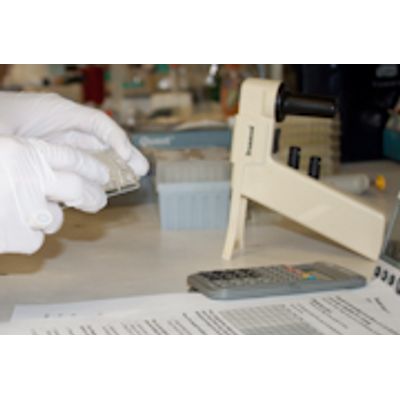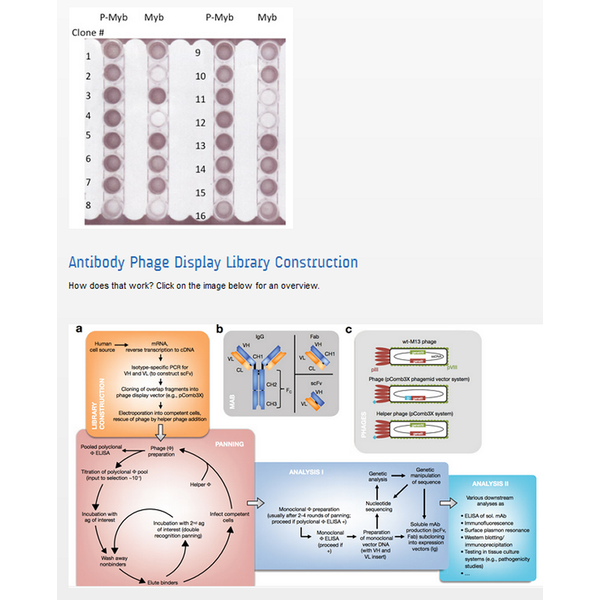


NeoClone - Model scFv - Phage Display Antibody
NeoClone is a world-class custom antibody development company, having discovered hundreds of antibodies for our clients. But there are very difficult targets out there that hybridoma technology alone can`t solve. So we added antibody phage display capabilities to help us develop the diverse and specific antibody repertoire to difficult targets that you need. Our team now has over 15 years of scFv phage antibody and recombinant antibody experience.
Greater Diversity, Faster Answers
One of the advantages of phage display is the enormous diversity of variant antibody genes that can be represented in a phage library, even to relatively non-immunogenic targets. NeoClone`s antibody phage display service provides a means of rapidly screening large numbers of scFv in our antibody gene libraries against potential binding partners in only 2 weeks. Once promising clones are identified, we can clone, express and sequence the scFv antibodies for your further evaluation. Based on your needs, we can engineer the antibody further for expression in mammalian cells, affinity maturation or other optimization steps. NeoClone can also construct new scFv phage libraries from immunized or naïve donors from several species.
Antibody Phage Display Screening
NeoClone`s proprietary antibody phage display screening method allows for efficient, high throughput identification of rare binders with distinctive characteristics required for a specific application. NeoClone is able to generate scFv antibodies that target antigens that have traditionally been difficult to attain, including Post-Translationally Modified peptides (PTMs) such as acetylated or phosphorylated antigens. In addition, NeoClone can express the specific phage as scFv-Fc in mammalian cell culture or by periplasmic expression in bacteria.
The image below shows the results of screening for a phospho-peptide specific scFv in one of our antibody phage display libraries. Four individual clones recognized the phospho-peptide (P-Myb) but not the un-phosphorylated peptide (Myb).

